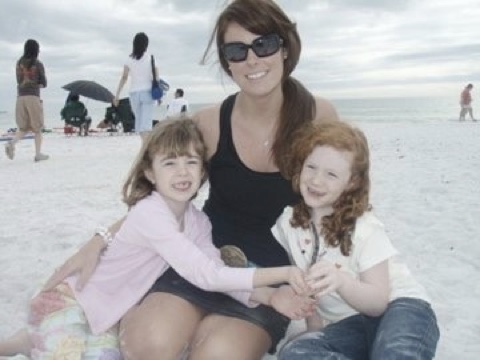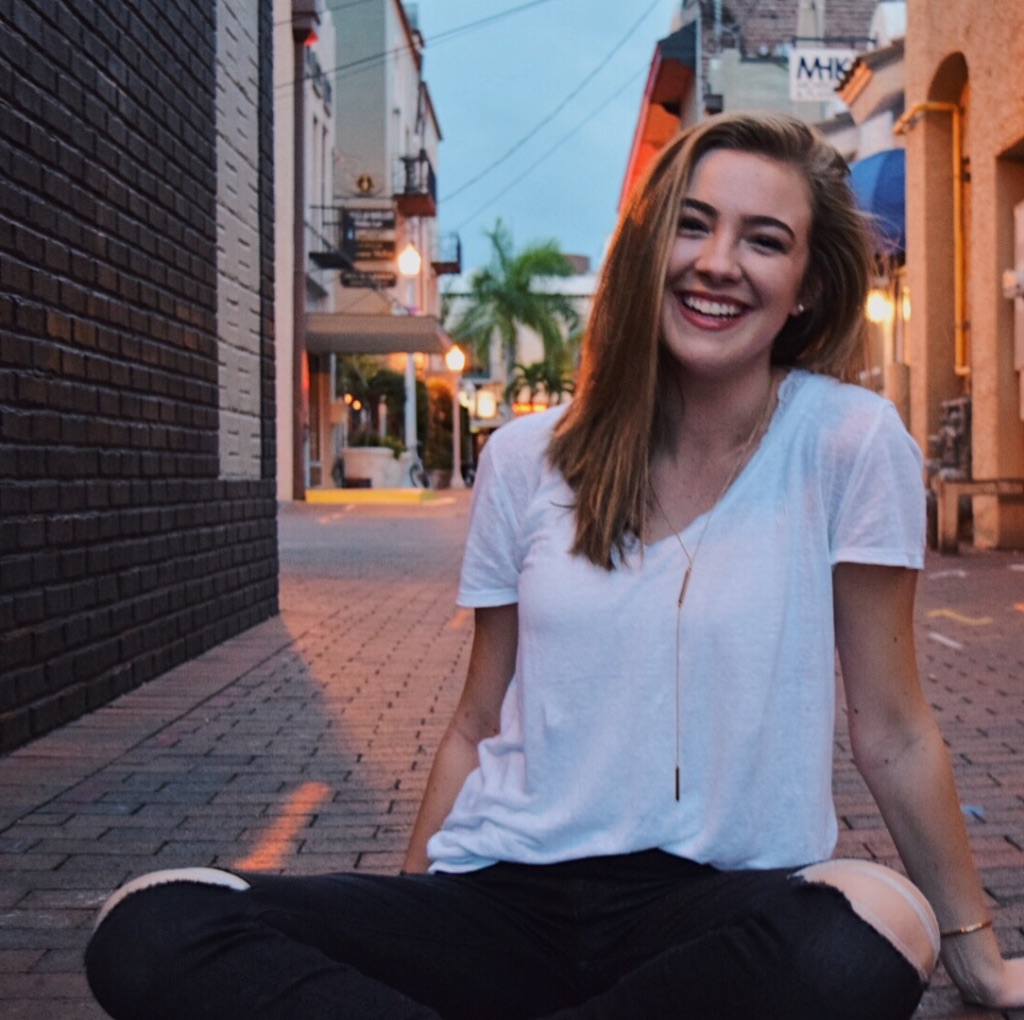Reconnecting with the storm-tossed town I once disowned

October 27, 2022 | Story and photos by Julia Coin | Photo illustration by Matthew Cupelli
This essay is part of Atrium’s Winter 2022 issue. To view the print edition online, visit our Issuu here.
I grew up listening to Jimmy Buffet.
At 10, “Cheeseburger in Paradise” made me laugh. At 16, it made me roll my eyes. The words were a reminder of my grossly Floridian past: sporting an oversized Hawaiian shirt with my middle school’s steel drum band, presenting my shell collection at a tourist-trap fair, learning how to spot bobcat scat.
Now, as I made my way home on Interstate 75, Buffet’s familiar song about lettuce, tomatoes, Heinz 57 and french-fried potatoes shuffled onto my blown-out speakers. It made me cry.
I heard these lyrics at least once a week every summer for 21 years in Sanibel, a barrier island off the coast of southwest Florida where I grew up.
Sanibel was a sanctuary, for its wildlife and its people. It was one big bird’s nest. It was a retiree’s escape. It was a kid’s Narnia.
Now, everything is brown and nearly leveled.
Sanibel Island, once Julia Coin’s summer hideaway, was leveled by Hurricane Ian in late September.
On Sept. 28, Hurricane Ian ravaged Sanibel and the southwest coast of Florida, flooding homes, sinking boats and sweeping away years of my memories. I watched from the safety of Gainesville more than 200 miles away as my town unraveled into heaps of wreckage.
I grappled with the pit in my stomach. Do I even have the right to be sad right now? By the time I graduated high school, I was eager to leave that town: one overridden with FloGrown shirts, Make America Great Again hats, cowboy boots — and Buffet’s tunes. Now, more than 100 had died across the state. No one in Lee County had power. Few in my neighborhood had cell service.
I needed to help, and I wanted to do it the best way I knew how. I hadn’t been able to speak to my parents since the storm hit. I didn’t know what I was going home to, but I was going.
I checked off two packing lists. One for my family: four cases of water, my boyfriend’s portable chargers, a pack of Rice Krispies Treats for my 5-year-old niece. The other for reporting: my laptop, a camera, my own portable chargers, Clif Bars.
Two days after Ian, I shared the highway with utility trucks from every county in Florida and took the exit 30 minutes before Fort Myers’ new 6 p.m. curfew. I navigated foreign, debris-lined streets as my high school friend and fellow reporter sat in the passenger seat.
I slammed on my brakes; I had missed the turn to my parents’ house. The pine trees that lined the manicured entrance just a month before were gone.
The town I once wanted to disown stared me in the face with all its rawness. Sanibel — where I learned to swim, bike and write — was unrecognizable, still severed from the mainland and withered by a storm surge that turned the lush trees I used to climb into barren sticks. Fort Myers — where I first dyed my hair red, sipped wine and fell in love — was littered with stray furniture and flung boats.


To the left, Julia plays on a Sanibel beach during the winter of 2006 with her sister and niece. To the right, she sits in Downtown Fort Myers in 2018. Hurricane Ian’s storm surge would have reached above her head.
The hurricane hovered over my home for eight long hours as 150 mph winds and sideways rain pelted. My family huddled in a two-by-seven closet in the middle of the house.
“It sounded like screaming cats,” my niece said.
The water never got in the house, but two more inches, and the first floor would have drowned. We were lucky. The hurricane left us with only a flooded garage, a totaled car and a short-circuited fridge.
But my parents’ interior design business, and everything else in Sanibel, was drenched and molding.
My friend and I hitched a boat ride to the island the first weekend people were allowed back on Oct. 8. We trekked eight miles through muck-covered roads, looking for survivors who would share their stories.
I blinked away tears and cleared my throat after each interview conducted next to mounds of soaked furniture and drywall.
The sunburned homeowners mourned the destruction of some of my favorite childhood escapes: the picnic nook surrounded by palm trees, the fountain outside The Sanibel School, the restaurant with the best sunset views.
But they also joked about the trivial things that somehow survived: the wonky-looking tree on West Gulf Drive, the word “Love” etched on a wooden path-marker, the stilted shack in the middle of the bay.
“We’ll get through this,” they told me, smiles mixed with their tears.
These people — the stubborn island folk and can-do captains — made me who I was, I realized. They were exactly what I loved about where I grew up; they were exactly who I lost touch with.
After seven hours of reporting, we headed back to the boat and passed strewn rental bicycles. They were up for grabs, a sign said. But there was only one left to borrow — a canopy bicycle, the kind made for honeymooners or families of four.
I took out my phone and snapped a photo to show my parents. I remember begging for rides on those touristy contraptions.
As we struggled to steer the rusted wheels through the island’s sludge, I heard the faint sound of steel drums. My phone, tucked in my pocket, somehow queued none other than Buffet’s “Margaritaville.”
It made me smile.